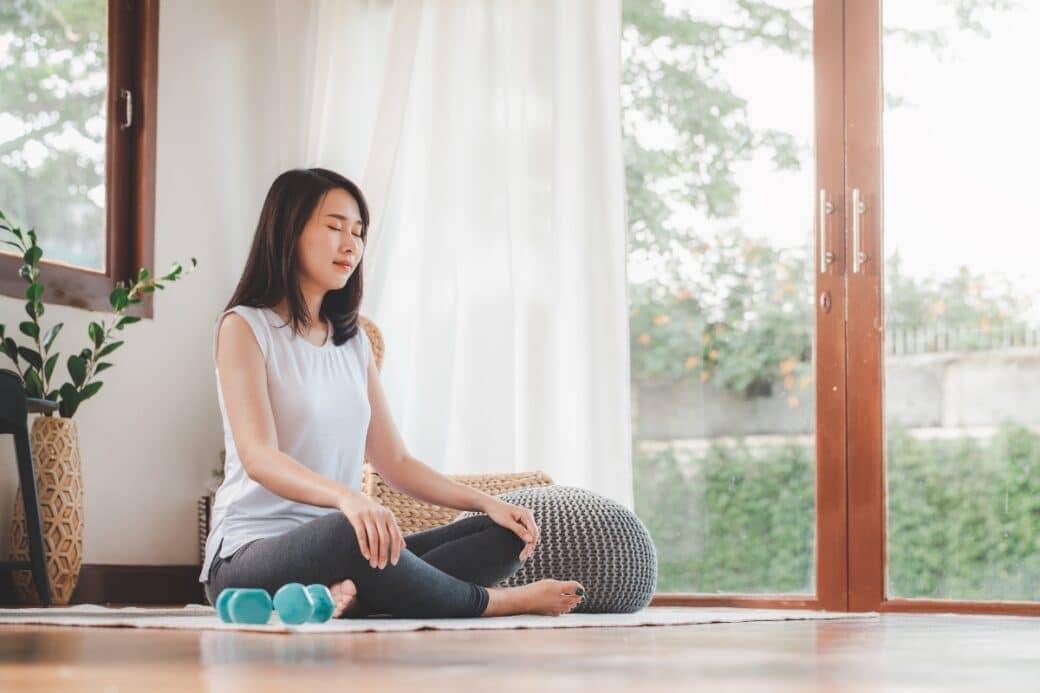In this article, you will discover the art of utilizing meditation beads for a practice called Japa Meditation. Japa Meditation is an ancient technique that involves the repetition of a mantra or affirmation while counting beads. Through this guide, you will learn the steps to harness the power of meditation beads and cultivate a sense of calm, focus, and inner peace in your daily life. Whether you are a novice or an experienced meditator, this article will provide you with the necessary tools and knowledge to enhance your spiritual journey using meditation beads. So grab your beads and get ready to embark on a transformative meditation experience.
Understanding Japa Meditation
Definition of Japa Meditation
Japa meditation is a technique rooted in the ancient traditions of Hinduism and Buddhism. The word “japa” itself means repetition or recitation, and in this type of meditation, practitioners use a string of beads to keep track of their mantra repetitions. By focusing the mind on the mantra and the movement of the beads, japa meditation helps to cultivate mindfulness, concentration, and a deeper connection with the divine.
Origins and History of Japa Meditation
Japa meditation has its origins in ancient Hindu and Buddhist traditions, dating back thousands of years. The repetitive recitation of mantras, or sacred phrases, has long been believed to be a powerful tool for spiritual growth and liberation. The use of meditation beads as a means of counting these repetitions is believed to have started in India, gradually spreading to different corners of the world as the practice gained popularity.
Benefits of Japa Meditation
Japa meditation offers a wide range of benefits for both the mind and body. By practicing this form of meditation, you can experience increased focus, clarity, and calmness in your daily life. It can help alleviate stress, anxiety, and promote a sense of overall well-being. Additionally, japa meditation can deepen your spiritual connection and bring a greater sense of purpose and meaning to your life.
Introduction to Meditation Beads
Understanding the Role of Beads in Meditation
Meditation beads, also known as malas, play a significant role in japa meditation. They serve as a tactile and visual aid that helps to maintain focus and rhythm during the practice. As the practitioner moves each bead through their fingers while reciting the mantra, it serves as a reminder to stay present and centered.
Different Types of Meditation Beads
There is a wide variety of meditation beads available, each with its own unique characteristics and energies. Some popular materials used for meditation beads include traditional Rudraksha seeds, gemstones like amethyst or rose quartz, and wooden beads like sandalwood or rosewood. Each material is said to have its own spiritual and energetic qualities, allowing practitioners to choose beads that resonate with their personal intentions and energies.
How Meditation Beads Aid In Mindfulness and Concentration
Meditation beads provide a physical anchor for the mind during japa meditation. By focusing on the sensation of moving each bead through the fingers, practitioners can cultivate a greater sense of mindfulness and concentration. The repetitive nature of the practice, combined with the tactile experience of the beads, can help quiet the mind, reduce distractions, and deepen the meditative state.

Selecting Your Meditation Beads
Factors to Consider When Choosing Beads for Meditation
When selecting meditation beads, there are several factors to consider. Firstly, consider the material of the beads and how it aligns with your intentions and energy. Secondly, think about the size and weight of the beads, as they should feel comfortable in your hands. Lastly, consider the aesthetics of the beads, as they should resonate with your personal style and preferences. Ultimately, choosing beads that you connect with on a deeper level will enhance your meditation experience.
Understanding the Significance of Different Bead Materials
Different materials used for meditation beads hold various symbolic meanings and energies. For example, Rudraksha seeds are believed to have a strong spiritual vibration and offer protection, while gemstones are associated with specific healing properties. Understanding the significance of different bead materials can help you select beads that align with your intentions and desired spiritual focus.
Buying Meditation Beads vs Making Your Own
Both buying and making your own meditation beads have their own merits. While buying beads provides a wide range of options and saves time, making your own beads can be a meaningful and meditative process. It allows you to infuse your energy and intention into the creation of the beads, making them even more personalized and special. Whichever option you choose, the most important aspect is finding beads that resonate with you and support your meditation practice.
Proper Care and Storage for Meditation Beads
Cleaning Your Meditation Beads
Regular cleaning of your meditation beads is essential to maintain their energetic and physical integrity. To clean them, simply wipe the beads with a soft cloth or use a gentle cleanser if necessary. It’s important to avoid using harsh chemicals or submerging the beads in water, as this may damage them. By keeping your beads clean, you ensure that their energy remains clear and conducive to your meditation practice.
Safe Storage Practices
Proper storage is crucial to protect your meditation beads from damage and to maintain their energy. When not in use, store your beads in a dedicated pouch or a clean, dry place. Avoid exposing them to direct sunlight or extreme temperatures, as this can affect their color and energy. By practicing safe storage practices, you can prolong the lifespan and energetic qualities of your meditation beads.
Recharging and Energizing Your Meditation Beads
Over time, the energy of your meditation beads may become stagnant or depleted. To recharge them, you can place them in natural sunlight for a few hours or bury them in the earth for a day. Additionally, you can also use visualization techniques or rituals to energetically cleanse and recharge your beads. By regularly recharging and energizing your meditation beads, you ensure that they continue to support your practice and resonate with positive energy.
Understanding the Structure of Meditation Beads
The Significance of 108 Beads
Traditional meditation beads are typically composed of 108 beads, with the number holding special significance in many spiritual traditions. The number 108 is considered sacred and represents the unity of the universe. Each bead symbolizes a mantra repetition or affirmation, allowing the practitioner to focus on the present moment and reach a state of oneness with the divine.
Understanding the Guru Bead and Tassel
The guru bead, also known as the meru bead, is the central bead on the meditation beads. It signifies the beginning and end of the practice. When using the beads, practitioners start and end their meditation sessions by gently touching or pausing at the guru bead. The tassel attached to the guru bead serves as a reminder of the connection between the physical and spiritual realms.
Different Styles and Configurations of Meditation Beads
Meditation beads come in various styles and configurations, with each style having its own unique characteristics and energies. Some beads feature a simple design with all the beads being uniform, while others may incorporate spacer beads or marker beads at intervals to help count larger repetitions. There is a wide range of designs available, allowing practitioners to choose beads that resonate with their personal style and preferences.
Preparing for Japa Meditation
Creating a Suitable Environment for Meditation
Creating a suitable environment is essential for a focused and immersive meditation experience. Find a quiet and peaceful space where you can practice without distractions. You may also want to consider creating a sacred or dedicated meditation area, incorporating elements such as candles, incense, or meaningful objects to enhance the ambiance of the space.
Dressing Comfortably for Meditation
Choosing comfortable clothing can greatly enhance your meditation experience. Opt for loose-fitting and breathable fabrics that allow for free movement and comfort. Avoid restrictive clothing that may cause discomfort or distract you during your practice. By dressing comfortably, you can fully immerse yourself in your meditation without any physical distractions.
Preliminary Breathing Exercises and Concentration Techniques
Before diving into japa meditation, it can be helpful to engage in preliminary breathing exercises and concentration techniques. These practices help to calm the mind, deepen your breath, and bring your focus into the present moment. Simple techniques such as deep belly breathing, alternate nostril breathing, or counting breaths can prepare you for a more focused and enriching meditation experience.
Holding the Meditation Beads During Japa Meditation
Proper Grip on Meditation Beads
When holding meditation beads, it’s important to find a grip that feels natural and comfortable for you. You can hold the beads in your non-dominant hand, allowing the beads to rest in between your thumb and middle finger. The index and ring fingers naturally fall between the beads, providing support and stability. Experiment with different grips until you find the one that suits you best.
The Role of the Thumb in Moving Beads
During japa meditation, the thumb is used to move the beads forward after each mantra repetition. As you complete a mantra, gently slide the thumb to the next bead, maintaining a steady rhythm. The movement of the thumb adds a physical dimension to the practice, keeping your focus engaged and allowing for a smooth and flowing meditation experience.
Important Don’ts in Handling Meditation Beads
When using meditation beads, it’s important to be mindful of a few “don’ts” to ensure the beads remain in a sacred and respectful state. Avoid letting others handle your beads, as they may inadvertently disrupt or transfer their energy. Additionally, refrain from using your beads for any other purpose unrelated to meditation, as this may dilute their energetic qualities. By treating your beads with reverence, you maintain the sacredness and integrity of the practice.
Techniques of Using Meditation Beads in Japa Meditation
Starting with the Guru Bead
To begin your japa meditation, start by holding the guru bead between your thumb and middle finger. This bead represents the beginning and end of the practice, so take a moment to set your intention and connect with your breath. You can recite a personal mantra or simply take a deep breath before proceeding to the next step.
Moving Through the Beads Sector by Sector
As you move through the japa meditation, slide each bead through your fingers with the thumb, moving from one bead to the next after each mantra repetition. It’s common to move from one bead to the next using the index finger and thumb, rather than crossing over the guru bead. This process is repeated for each mantra repetition, gradually moving through each bead on the mala.
Using Mantras with the Meditation Beads
The use of mantras is a fundamental aspect of japa meditation. A mantra is a sacred phrase or sound that holds significance and resonance for the practitioner. To practice japa meditation, select a mantra that aligns with your intentions or personal beliefs. As you move through each bead, silently or softly recite the mantra, focusing your attention on both the repetition and the movement of the beads. This combines the power of sound, touch, and concentration, deepening your meditative state.
Common Challenges in Japa Meditation and How to Overcome Them
Dealing with Distractions During Meditation
Distractions are a common challenge in any meditation practice. When distractions arise, gently acknowledge them without judgment and bring your focus back to the mantra and movement of the beads. It can be helpful to visualize the distractions as passing clouds, allowing them to float away as you return to the present moment. With consistent practice, distractions become less influential, and your ability to stay focused strengthens.
What to Do When You Lose Count of Your Beads
Losing count of your beads is another common challenge, particularly when starting japa meditation. If you lose count, simply continue with the practice without becoming attached to the number. Remember, the number of repetitions is not as important as the quality of your presence and connection with the mantra. Over time, you will develop a deeper sense of intuition and rhythmic awareness, making it easier to stay focused without relying heavily on counting.
Handling Fatigue or Disinterest in Meditation
It’s natural to experience fatigue or disinterest in meditation at times. When this happens, it can be helpful to switch up your meditation routine. You may explore different mantras, adjust your posture, or experiment with different meditation techniques. Additionally, consider seeking support from a meditation teacher or joining a meditation community for guidance and inspiration. Remember that meditation is a practice, and it’s normal to have ups and downs along the journey.
Enhancing Your Japa Meditation Experience
Incorporating Additional Mindfulness Practices
To enhance your japa meditation experience, consider incorporating additional mindfulness practices into your routine. This can include activities such as mindful walking, mindful eating, or journaling. These practices help to cultivate a deeper sense of awareness and presence in your daily life, allowing you to carry the benefits of meditation beyond your formal practice.
Recapping Your Meditation Journey: Reflection and Journaling
After each meditation session, take a moment to reflect on your experience. Consider journaling about any insights, thoughts, or emotions that arose during the practice. This process of reflection can deepen your understanding of your meditation journey and provide valuable insights for personal growth. By capturing your experience through writing, you create a record of your progress and a source of inspiration for future meditation sessions.
Sharing Your Experience: Joining Meditation Groups and Communities
Sharing your meditation journey with others can be incredibly enriching and supportive. Consider joining meditation groups or communities where you can connect with like-minded individuals. Sharing your experiences, insights, and challenges with others can provide encouragement, inspiration, and a greater sense of accountability in your practice. Together, you can cultivate a supportive network that enhances your japa meditation experience and fosters personal and spiritual growth.
In conclusion, japa meditation is a powerful practice that combines the repetition of mantras and the use of meditation beads to cultivate mindfulness, concentration, and spiritual connection. Meditation beads serve as a tangible aid, helping practitioners focus their attention and maintain a steady rhythm during the practice. By understanding the significance of different bead materials, selecting beads that resonate with your intentions, and properly caring for and storing your beads, you can enhance your meditation experience. With a suitable environment, proper grip, and techniques of moving through the beads, you can engage in japa meditation with confidence. Overcoming common challenges and incorporating additional mindfulness practices further deepens the benefits of japa meditation. By sharing your experiences and joining meditation communities, you connect with others who share your journey, fostering growth and mutual support. Through the practice of japa meditation and the use of meditation beads, you can embark on a transformative path of self-discovery, inner peace, and spiritual connection.




